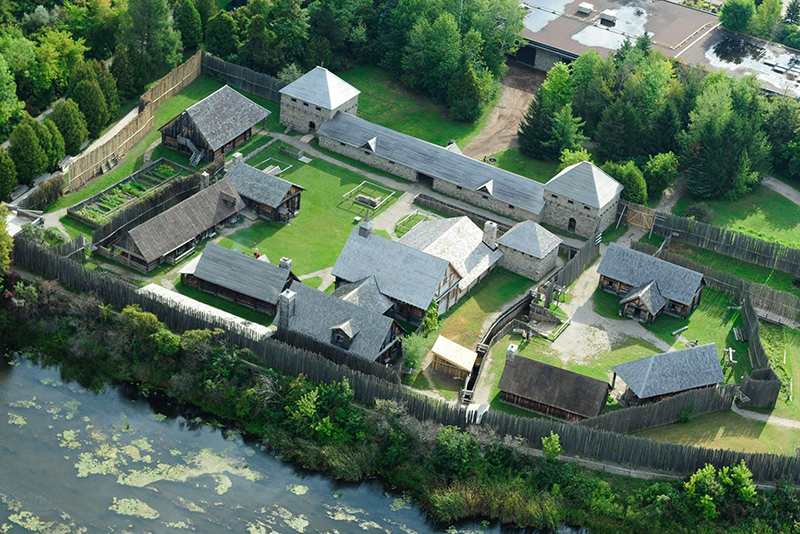Welcome to your digital tour of Sainte-Marie among the Hurons
Step into the past with our digital tour of this Jesuit Mission of Sainte-Marie! Explore our site through detailed descriptions and information about the site’s history within the mission, accompanied by captivating photos and audio clips. Enjoy your tour!
Sainte-Marie among the Hurons
1639 – 1649
Ontario’s first European Community, Sainte-Marie among the Hurons was the headquarters for the Jesuit Mission to the Huron Wendat people. In 1639, the Jesuits, along with French lay workers, began construction of a community that included barracks, a church, workshops, residences, and a sheltered area for Indigenous visitors. By 1648, Sainte-Marie was a wilderness home to 66 French men, representing one-fifth of the entire population of New France. Sainte-Marie’s brief history ended in 1649, when members of the mission community were forced to abandon and burn their home of nearly ten years. After extensive archaeological and historical research, Sainte-Marie among the Hurons is now recreated on its original site, where the mission’s compelling story is brought to life.
Welcome to Sainte-Marie among the Hurons! This National Historic site is a reconstruction of the original 17th century Jesuit mission headquarters to the Huron-Wendat people. Sainte-Marie among the Hurons was the earliest European community in what is now Ontario; the original mission headquarters was built here in 1639 and existed for 10 years. The reconstruction of Sainte-Marie was opened to the public as a provincial attraction in 1967.
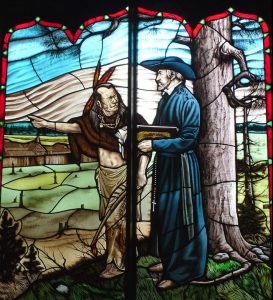
Joseph Chiwatenwha and Jean de Brébeuf – A sharing (Stained Glass – Martyrs’ Shrine)
The unique story of Sainte-Marie among the Hurons involves three main groups:
The Wendat people, the Jesuit priests, and the French labourers.
The Wendat
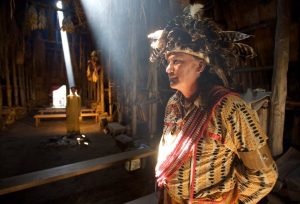
The Wendat were a highly organized people with a complex spirituality. The agriculturally based Wendat nation was divided into four main tribes: Bear, Cord, Rock, and Deer. The name Wendat had been translated as meaning “island dwellers” or “dwellers on a peninsula”. The European term “Huron” was given to them by the French and may refer to the bristled hairstyle worn by some of the men. The region they inhabited, Wendake, is today known as Huronia.
The Wendat were well situated for trade with the French and acted as middlemen with other tribes. Their sedentary lifestyle was favourable to missionaries, who had learned the difficulties of working with nomadic peoples. The generally accepted estimate on pre-contact Wendat population is about 22,500. By 1650, war and disease had reduced this number by over 70 percent.
The Jesuit Priests
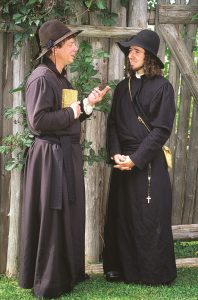
The Jesuits were founded in 1540 by Ignatius of Loyola. The Society of Jesus was a religious order dedicated to teaching Christianity throughout the world. Armed with comprehensive education and rigorous discipline, the Jesuits were well-suited to mission work in the New World. They travelled from village to village, learning the Wendat language and customs, and preaching to the Indigenous people.
A preliminary stay among the Wendat from 1626 to 1628 made Father Jean de Brébeuf the obvious choice as first Mission Superior in 1634. The job fell to Father Jérôme Lalemant in 1638, and Father Paul Ragueneau was appointed to the position in 1644.
The French labourers
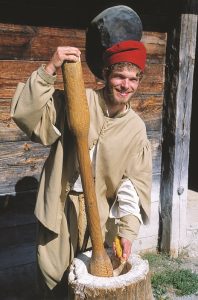
The French labourers at Sainte-Marie that offered their skills to the Jesuits were a small group of religiously motivated men known as “Donné”. From the French verb “to give”, these men received only food, clothing and shelter in return for their work.
Other working men at the mission were the “Engagé” or hired men, and educated, non-clerical members of the Jesuit order known as “Lay Brothers”. Young boys served as workers’ apprentices, some only 10 or 11 years old.
European women did not travel to Sainte-Marie; the Jesuits believed the journey was too difficult and dangerous. It was hoped Sainte-Marie would develop into a full community once the Wendat had been largely converted, and peaceful relations existed with the Iroquois.
TOUR STOPS
1. Mission Community / Main Gates
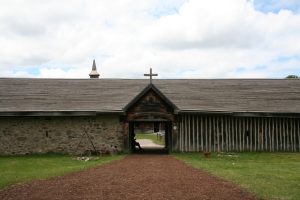
Founded in 1639, the community of Sainte-Marie was the permanent residence of the Jesuits and the labourers centrally located in Wendat territory.
Mission Community / Main Gates
As you approach the Main Gates, imagine what it would have been like in the 17th century as you arrived at this isolated mission headquarters. Founded in 1639 by Father Jérôme Lalemant, the community of Sainte-Marie was to be the permanent residence of the Jesuits and their labourers. Its position along the Isiaragui River (now called Wye River) facilitated travel and the establishment of farming activities. Centrally located in Wendat territory, it was sufficiently removed to serve as a place of devotion and retreat for the missionaries. Sainte-Marie would allow the missionaries to retire from working in the villages for a time and provide a place where they could meditate and converse with men of their own language and culture.
IHS Monogram
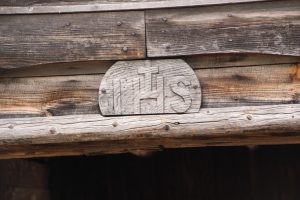
As used by the Jesuit order, the IHS monogram over the main gates forms the beginning of the name “Jesus” in the Greek language.
Lalemant’s dream was to create an ideal Christian settlement that would serve as an example to the Wendat population. The settlement would provide protection from danger and be virtually self-sufficient due to its geographical isolation.
It should be noted that the community of Sainte-Marie was very much a “work in progress” – no single reconstruction can adequately represent the almost continual development in its ten-year existence.
As used by the Jesuit order, the IHS monogram over the main gates forms the beginning of the word “Jesus”, in the Greek language.
Lalemant quote: “It had been one of our thoughts while building a house apart, remote from the vicinity of the villages, that it would serve among other things, for the retreat and meditation of our evangelistic labourers who, after their combats, would find this solitude full of delights.”
2. Fleshing Area
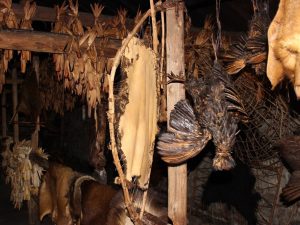
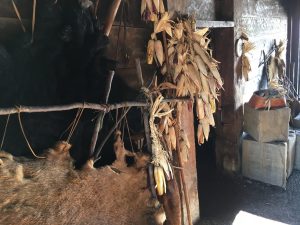
The French supplemented their agricultural efforts with fish and wild game, using the furs and hides procured from such activities.
Fleshing Area
The French supplemented their agricultural efforts with fish and wild game. Like the Wendat, they prepared and made use of the furs and hides procured from such activities. Using their firearms, the French successfully hunted large birds like trumpeter swans. Reduced to the point of extinction, these birds have since been successfully re-introduced to the area today.
Wendat men fished seasonally with nets and weirs. Smaller game was snared, while larger game, such as deer, was hunted in drives. An animal’s flesh provided food and sinew, bones were used as tools, and the hides and furs were used for clothing. The French soon realized the advantages of using animal furs for clothing, like the Wendat did, especially in the winter.
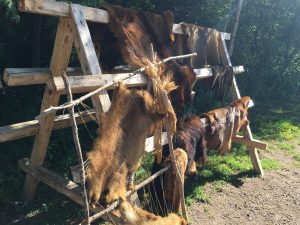
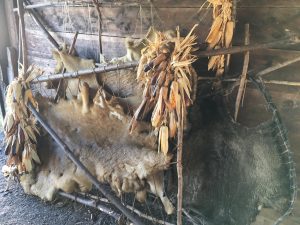
3. Soldiers Barracks
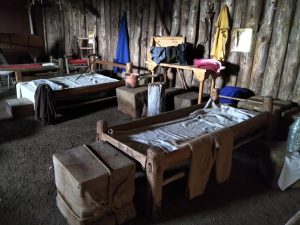
Soldiers occasionally accompanied the missionaries from Quebec and wintered at Sainte-Marie.
Soldiers’ Barracks
Soldiers occasionally accompanied the missionaries from Québec and wintered at Sainte-Marie. The soldiers provided a level of protection on the journey and also some protection for the mission headquarters. Twenty-two French soldiers were sent to the Wendat territory in 1644 but by 1649 their numbers had dwindled to just six. While some did their duty for the service of their faith, others appeared more interested in procuring furs for profit. The Desfoss brothers served as soldiers at Sainte-Marie in 1649 and returned to Québec in possession of nearly 340 kilos of furs.
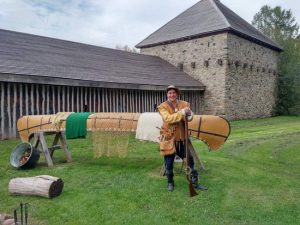
NORTH COURT

As you exit the Soldiers’ Barracks you will be entering the North Court section of the mission. North Court housed the majority of European residences and workshops, plus a chapel for the Jesuits and their workers.
4. Original Stonework

The original stonework of Sainte-Marie was excavated by Kenneth Kidd in 1941, who theorized that the remains were part of the Jesuit chapel and residence.
Original Stonework
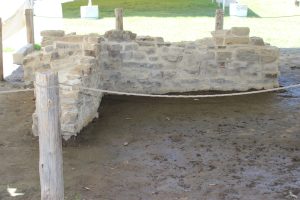
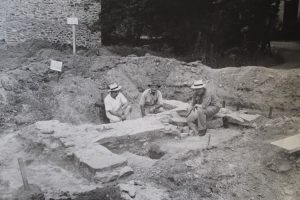
The original stonework of Sainte-Marie was excavated by Kenneth Kidd, from the Royal Ontario Museum, in 1941 but was not incorporated into the 1960s reconstruction by archaeologist Wilfrid Jury, of the University of Western Ontario. Kidd theorized that the remains were part of the Jesuit chapel and residence.
The three remnants are: the double fireplace (near the Blacksmith shop), so named because it consisted of two hearths positioned back-to-back, the great fireplace (in the middle), named for its size, and the chapel fireplace (near the Granary). The fireplaces were constructed from quarried limestone indigenous to the area and held together with a soft lime mortar.
Modern Conservation Work
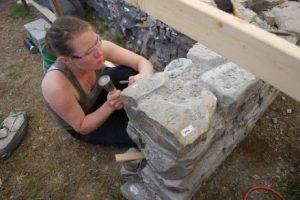
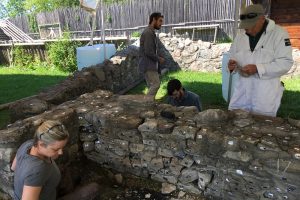
Willowbank stone conservation field school using thermal imaging of the original stonework at Sainte-Marie.
Ongoing conservation work is helping to preserve this first European masonry in Ontario, and the ruins are still yielding valuable historical information. Excavations of the great fireplace have also revealed evidence of an earlier European structure.
5. Granary
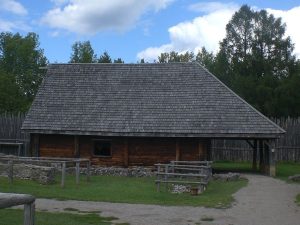
The establishment of farming operations provided the community with a stable food supply, at one time boasting a three-year surplus.
Granary
Corn represented close to 65% of the Wendat diet; prior to sixteen thirty-none, the French relied on the generosity of their Wendat hosts for supplies of this food. Following the establishment of farming operations, the Jesuits were more than able to return the favour, at one time boasting a three-year surplus for times of need.
With a large percentage of crops destroyed by rodents during the growing phase, storage to minimize further loss was important. The Wendat used bark baskets and clay pots and hung corn from the longhouse rafters. The wooden bins in the Granary also offered some measure of protection for various crops.
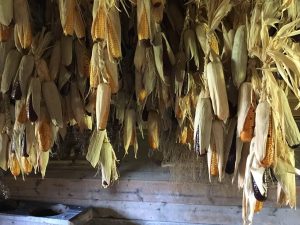
6. Cookhouse Garden
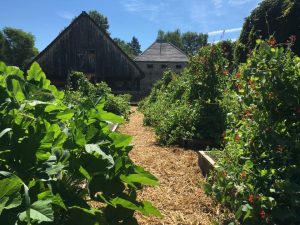
Carrots, beets, turnips and peas made meals more appealing to the French who were unaccustomed to a diet consisting mainly of corn.
Cookhouse Garden
While farming took place on the fertile flats on the opposite shore of the river, vegetables were grown within the mission walls, under the supervision of lay brother Pierre Masson. In Sainte-Marie’s original gardens, carrots, beets, turnips and peas made meals more appealing to the French who were unaccustomed to a Wendat-style diet, consisting primarily of corn. This European style of garden was much more formal in design than traditional Indigenous planting methods.
Required for the celebration of Mass, bread was made from wheat sown for that purpose, and sacramental wine was likely produced from local grapes.

7. North West Bastion
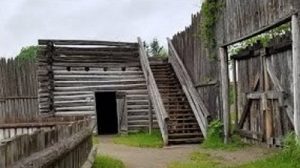
From the top of the bastion it is possible to view three different systems of transportation: rivers in the 17th century, the rail bed from the 19th century, and the 20th century highway.
Northwest Bastion
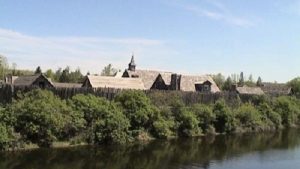
From this vantage point you can view the Wye River, historically called the Isiaragui, which was the conclusion of a 1,250 km voyage from Quebec. At the close of this thirty-day voyage with fifty portages, Sainte-Marie would have been a welcome sight for French eyes.
Travelling from east to west, the French paddled a river route starting at the Sainte-Lawrence river at Quebec and proceeding to the Ottawa and Mattawa rivers, eventually connecting to the French River, which empties out into Georgian Bay. From the mouth of the French River, the French then followed the rugged shoreline down the east side of Georgian Bay, to the Wye River, the last leg of their journey to Sainte-Marie. In order to assist new missionaries in their travels to the land of the Wendat, Father John de Brébeuf wrote specific instructions to brief them on proper etiquette when travelling with the Huron-Wendat people.
Brébeuf’s Instructions
St Jean de Brébeuf

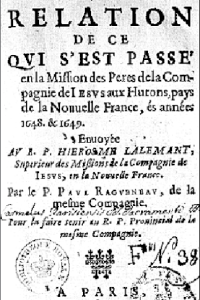
Jesuit Relations
Brébeuf’s Instructions, excerpted from the 1637 Jesuit report from New France, “for the Fathers of our Society who shall be sent to the Hurons”.
Brébeuf’s Instructions, excerpted from the 1637 Jesuit report from New France, “for the Fathers of our Society who shall be sent to the Hurons”:
“You must be prompt in embarking and disembarking; and tuck up your robe so it will not get wet, and you will not carry either water or sand into the canoe.
You must provide yourself with a tinder box to furnish them fire in the daytime to light their pipes, and in the evening when they have to encamp.
Eat their food, although it may be dirty, half-cooked and tasteless; when one becomes accustomed to it, there is rarely enough.
Do not begin to paddle unless you are inclined to continue paddling. It is easier to refuse at first, than to desist afterwards. Try, at the portage, to carry something, according to your strength. Be of cheerful disposition in enduring the fatigues of the voyage.
Understand that the Wendat will retain the same opinion of you in their land that they have formed on the journey. Put into practice these lessons and you will have advanced considerably in gaining their affection”.
8. Chicken and Pig Run
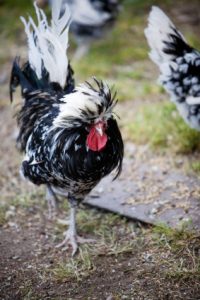
Chickens were transported to Sainte-Marie as part of the European farming operation. The Houdan chicken was chosen for its ability to withstand the Canadian climate.
Chicken Run
Chickens, pigs, and cows were transported to Sainte-Marie as part of the farming operations. Eggs were important for French-style cooking, and the pigs provided a pork supplement to the largely vegetarian diet in the Wendat land. Because of the hardy breed of cattle used in New France, the French eventually called them “Canadienne” and favoured them for import to North America. The breed of chicken originally used at Sainte-Marie was black and white and had a plumed head. The breed was called the Houdan, chosen for its ability to withstand the Canadian climate.
9. Jesuit Residence
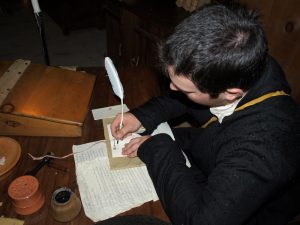
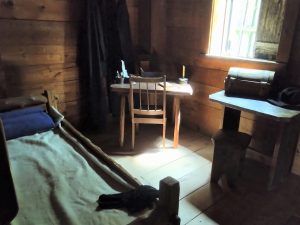
In this home and place of spiritual retreat, Jesuit priests discussed mission work and shared their progress in learning the Wendat language.
Jesuit Residence
In addition to a place of gathering and a refuge for prayer and meditation, the Residence served as home and offices for the Jesuits priests. The Father Superior determined the overall direction of the mission work and gave orders to the missionaries. The upstairs area was generally used for spiritual retreat and respite, with the main floor being the domain of the Procurator, Spiritual Director, and Father Superior. Here reports and letters were written to track progress of the missionary work; these reports were eventually sent to France and were destined to be published as the Jesuit Relations. These descriptions of mission work and Indigenous lifestyles are a key primary source of historical information.
In working among the Wendat, Jesuit fathers faced challenges stemming from their differing appearance, customs and their newness to the Wendat language. Sainte-Marie provided them with a European environment in which they could revitalize themselves for further evangelical work.
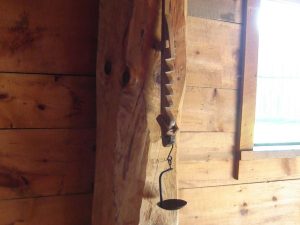
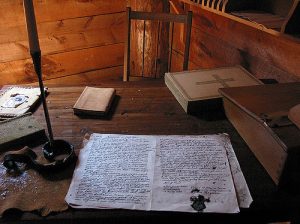
10. Refectory
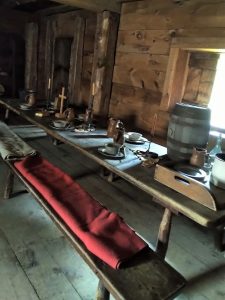
While the setting was simple, comfort was found in the company of a shared meal.
Refectory
While the setting was simple and the fare unfamiliar, comfort was found in the company of a shared meal. Gathered together, the Jesuits discussed obstacles and advancements of the mission work and shared their progress in learning the Wendat language. Although the men of Sainte-Marie observed days of fasting and abstinence, such practices were not enforced among Wendat converts, who often survived with little in times of need.
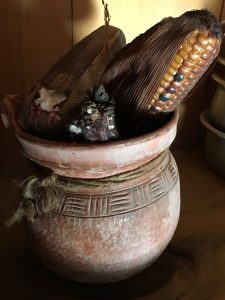
11. The Chapel
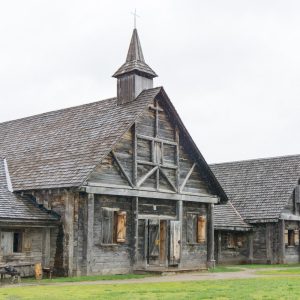
A place of worship in the European style, the Chapel of Sainte-Marie served the needs of the missionaries, who began their day with prayers and private Mass at four o’clock in the morning.
Chapel
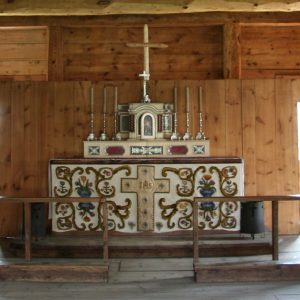
A place of worship in the European style, the Chapel at Saint-Marie served the needs of the missionaries. A Jesuit’s typical morning began with prayer and a private celebration of Mass. During the day, time was allotted to visit Wendat communities, to tend to the sick and instruct the well. Evenings consisted of dinnertime meetings, examination of conscience and prayer.
Of special note,a modern design feature has been incorporated into the Chapel’s embroidered altar frontal; the eight fleurs-de-lis represent the North American martyrs killed between 1642 and 1649. Being a missionary in the land of the Wendat was challenging work.
Challenges facing Jesuit priests
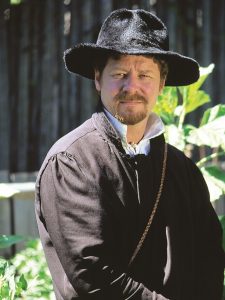
Jesuit priests faced many challenges in their missionary work to the Huron-Wendat.
Jesuit priests faced many challenges in theirmissionary work to the Huron-Wendat. The Wendat found the facial hair of Europeans unattractive, and saw weakness in their smaller physical stature. The Jesuit black robe, awkward for travel and uncomfortable in the summer, also aroused Wendat suspicion.
In learning the Wendat language, missionaries found it difficult to express Catholic ideas of religion and theology. Until they became more fluent, priests were often ridiculed for their mistakes.
European notions of privacy disturbed the Wendat, who perceived such behaviour by the Jesuits as extremely anti-social. In many cases missionaries were seen as sorcerers trying to hide their magic.
The Jesuits baptized large numbers of the sick and dying. Many Wendat suspected baptism as the cause of death, slowing mission work during epidemics. Most peculiar to the Wendat was the clerical concept of celibacy, which re-enforced the images of the Jesuits as sorcerers.
12. The Cookhouse
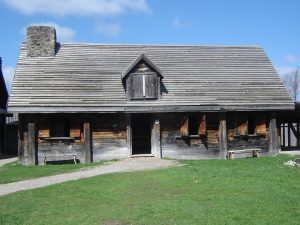
Amboise Brouet prepared all meals in this location. Corn was grounded into flour for bread, and meats went further when included in soups or stews.
Cookhouse
All food for the French was prepared in the cookhouse by Lay brother Ambroise Brouet and then distributed to the various residences at mealtimes. The cookhouse may also have been Brouet’s home, owing to the long daily hours required of his work. Corn was grounded into flour using mortar and pestle, but unlike the Wendat cornbread, eggs and spices were added to flavour according to French tastes.
A small portion of the mission diet, meats went further when included in soups or stews. The Wendat often seasoned their sagamité (or corn soup) with smoked fish, and a Wendat delicacy leindohy, or “stinking corn”, was made by burying unripened cobs of corn in mud and leaving it to rot for two or three months. It was then boiled with meat or fish.
An interesting archaeological feature of the cookhouse was the discovery of a “midden”, or garbage pit, located near the centre of the floor. You can view some preserved 17th-century eggshells from this midden in Sainte-Marie’s Interpretive Museum.
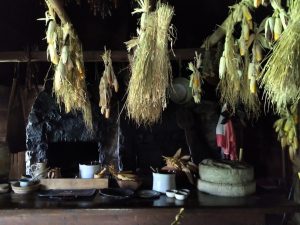

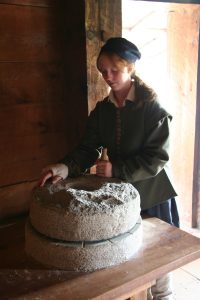
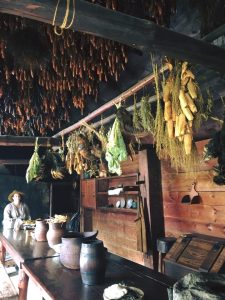
13. Farmers Dwelling & Stables
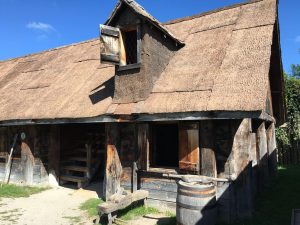
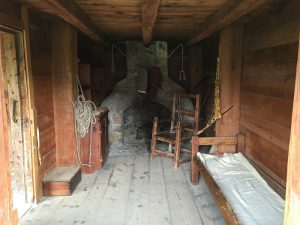
The Donné Eustache Lambert served as Sainte-Marie’s farmer, and in August 1646 transported two calves to the Mission on a month-long canoe trip from Québec.
Farmer’s Dwelling & Stables
Breed of cattle
called “Canadienne”
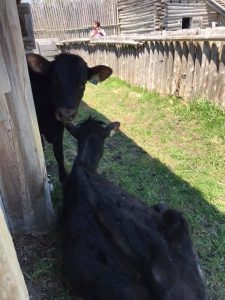
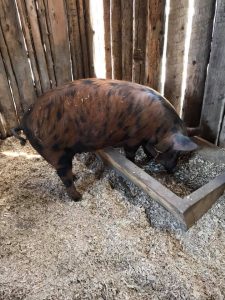
Razorback boars
The French used wood and iron farming implements, while Wendat tools were bones and stone. The Wendat did not re-fertilize their farmland soil, necessitating periodic relocation of their villages.
In order to help the mission headquarters be as self-sufficient as possible, calves, chickens, and pigs were transported to Sainte-Marie by canoe from Quebec. Donné Eustache Lambert served as Sainte-Marie’s farmer. Born in 1618 probably near Boulogne France, Eustache Lambert was a donné, interpreter, fur trader, and settler who likely came to New France in the early 1640’s. He appears for the first time in Canadian history in August of 1646, on the occasion of a return journey to Sainte-Marie among the Hurons in which he and others transported 2 calves and over 50 bundles of supplies.
The life of Eustache Lambert
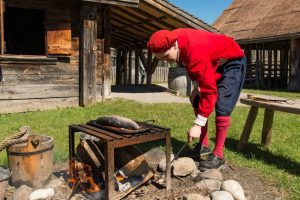
Eustache Lambert made two or three trips to the mission, and he seems to have remained in the service of the Jesuits until at least 1651.
Transporting the calves to Sainte-Marie was Lambert’s second or third trip to the mission, and he seems to have remained in the service of the Jesuits until at least 1651.
In 1653 Lambert acquired a tract of land at Pointe-Lévy in Quebec, and it was there that he built a house which he named Sainte-Marie in honour of his youth spent in the Huron country. The house became a favourite meeting place for Huron and Algonquin fur traders passing through Quebec. It seems Lambert hunted and fished there with some success; in 1671 he was able to free himself from seigneurial dues by paying them off with money and beaver pelts.
Eustache Lambert was also said to be an owner of a merchants’ bank, a house in the Lower Town of Quebec, and an additional dwelling. In 1669 he became a churchwarden.
Lambert married Marie Laurence in 1656 and had a large number of descendants. He died in July of sixteen seventy-three and was buried at Quebec.
14. Boivin Building

Donné Charles Boivin designed and oversaw construction of the French buildings, possibly using three-dimensional models as his blueprints.
Boivin Building
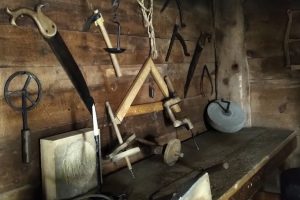
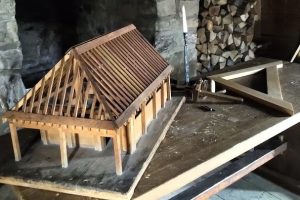
Donné Charles Boivin possessed the skills of an architect and was known as a “Master Builder”. He was responsible for the design and construction of the French buildings at Sainte-Marie, possibly executing his plans in the form of scale-models.
Of the many other Donnés involved in the construction work, only Jean Guiet is listed as a carpenter by profession – not unusual as familiarity with many trades was common for workingmen of the time. The hardships of a Donné’s service were offset by advantages such as education from the Jesuit fathers. Those returning to everyday society also enjoyed some renown due to the adventurous nature of their experience.
The Donnés signed a contract giving a set amount of time in service to the Jesuits and their missionary effort.
Extract from a Donné Contract
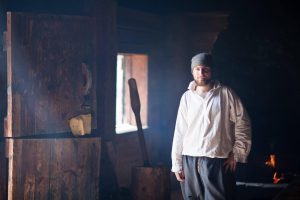

Donnés” (from the French verb “to give”) received only food, clothing and shelter in return for their work.
Extract from a Donné Contract : “We by the present accept (the individual) as Donné in the capacity of domestic servant during his lifetime…promising, on our part, to maintain him according to his position with food and clothing without other wages or claims on your part, and to care for him kindly in case of sickness, even to the end of his life, without being able to dismiss him in such case, except with his own consent provided that on his part, he continues to live in uprightness, diligence, and fidelity to our service”.
15. Carpenter Shop
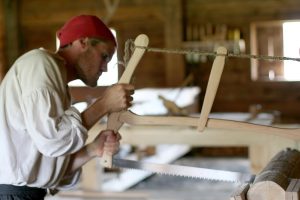

Sainte-Marie aimed to be self-suffcient in all things: wood was utilized for beds, tables, chairs, dishes, hinges and dowels.
Carpenter Shop
Transportation costs and difficulties meant furnishings were constructed at the mission; Sainte-Marie aimed to be self-sufficient in all things. Being the most readily available resource, wood was used for beds, tables, chairs and dishes. When iron was scarce wood could also be used for hinges and dowels.
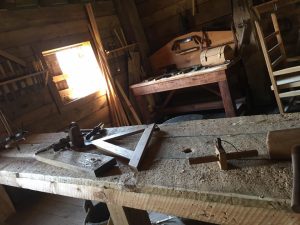
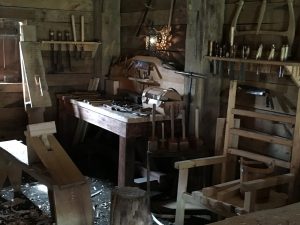
16. Blacksmith Shop


Established in 1642, the forge allowed lay brother Louis Gaubert to custom-make Sainte-Marie’s ironwork. Imported from France, iron was a scarce and valuable commodity.
Blacksmith Shop
Established in 1642 the forge allowed Lay Brother Louis Gaubert to custom-make Sainte-Marie’s ironwork. Louis fabricated nails, hinges, hooks, and small tools. He also made items such as knife blades and awls that the priests distributed as gifts when they traveled among the Wendat. Imported from France and then from Québec to Wendake, iron was a scarce and valuable commodity.
Hardwoods burned in the hearth produced wood coals to fuel the forge fire. Oxygen pumped from the bellows created temperatures high enough to allow the smith to work the iron on the anvil with metal hammers and special shaping tools.
The Wendat recognized the value of European metal – an early term for the French, Agnonha, meant “iron man”. Seeing the work and hearing the sounds of the Blacksmith at Sainte-Marie would have been a unique experience for the Wendat.
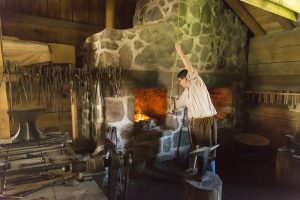
17. Stone Bastions
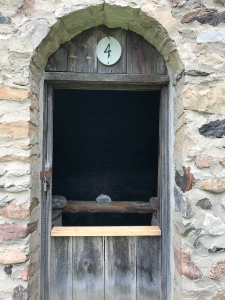
By 1647 construction of the stone bastions began, possibly forming a defensive citadel.
Stone Bastions
Father Paul Ragueneau commented that Sainte-Marie had once felt a safe haven from the Iroquois, surrounded as it was by numerous Wendat villages. By 1647, with many Wendat villages ruined or abandoned, construction of the stone fortifications began, assisted by the arrival of stonemason Pierre Tourmente. Forming part of a defensive citadel, the work featured observation towers and storage areas. As part of the reconstruction of Sainte-Marie in the 1940’s, three bastions were rebuilt around the standing remains of three of the original structures.
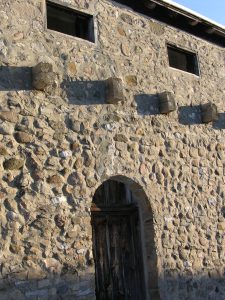
SOUTH COURT

The South Court marks the early beginnings of Sainte-Marie and was a hub of activity for the French community with the arrival of canoes, supplies and the raw materials needed for construction.
18. Locked Waterway

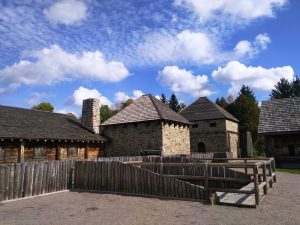
Archeologist Wilfried Jury theorized about the practical and labour-saving advantages of a locked waterway, noting that stone, iron, and other heavy building materials could be floated into the mission for ongoing construction.
Locked Waterway
The waterway is certainly the most unique and controversial aspect of the reconstruction of Sainte-Marie. The nature and function of this feature is still the subject of debate. Wilfrid Jury, the archaeologist who directed Sainte-Marie’s reconstruction, envisioned and rebuilt the waterway as a locked canal permitting entry to the mission from the river. If it indeed was a locked waterway, it would have been the first of its kind in North America.
Other theories are that the waterway simply provided a source of fresh water to the mission, perhaps powered a grist mill, or may have aided in springtime flood control by pooling and draining excess water. An extension of the waterway may also have existed to supply the Blacksmith Shop with water to temper iron.
No mention of the waterway has ever been discovered in the Jesuit Relations. Whatever its original use, the waterway remains an intriguing feature of the reconstruction and a good example of European ingenuity in the 17th century.
Waterway Reconstruction
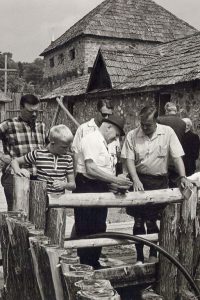
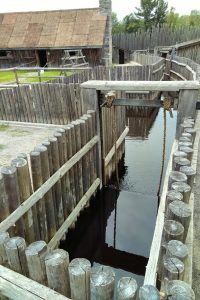
Re-built as a locked canal permitting canoes entry to the mission from the river, the nature and function of the waterway is still the subject of debate.
Other theories include its use in powering a mill wheel, or for assisting in drainage.
Although we will never know conclusively the specific functions of the waterway at Sainte-Marie, Wilfrid Jury, the archaeologist who directed Sainte-Marie’s reconstruction, identified various items in his excavation of this area that suggested to him a locked waterway. Timber troughs and spillways were found in selected sections, implying intentional control of the water. Upright timbers were also noted that could possibly have been used to support locks to regulate water levels. Two rectangular basins were identified that could have been used for canoe loadings and landings.
Jury theorized about the practical and labour-saving advantages of a locked waterway, noting that stone, iron, and other heavy building materials could be floated into the mission for ongoing construction. He also suggested that the Indigenous canoes were of a modest size that could be transported into the mission via such a waterway.
Jury was thrilled with his discoveries, noting that “bringing to light this three-hundred-year-old development, where water had been harnessed to serve men’s needs, will probably remain the greatest reward of a lifetime of excavating for Canada’s past.”Content goes here.
19. En Pilier

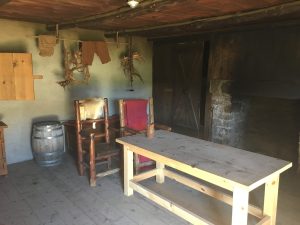
Named for its simpler vertical post construction style, this building is believed to be the first dwelling built at Sainte-Marie.
En Pilier
This building, called En Pilier, is named for its simpler vertical post construction style. This building is believed to be the first dwelling built at Sainte-Marie. In later years, it may have served as a residence, storage area, or hospital.
Research indicates that people in early times were not necessarily shorter in the 17th century. A recurring myth exists that people were shorter because beds seem shorter. This is due to the fact that beds with upright posts at each corner create an optical illusion making them appear shorter. Standard bed length today is 75 inches long (or 1.9 metres). Most beds, historically, are in fact often longer.
While archaeology has revealed the types of construction used at Sainte-Marie, the lack of plans or drawings means the “look” of the reconstruction is the result of educated speculation. Many possible styles are represented, for example, three types of roofing – cedar shingles, pine planks, and the Indigenous style elm bark.
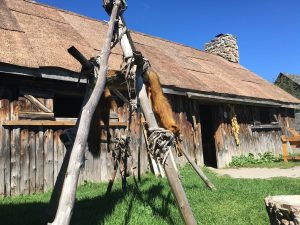
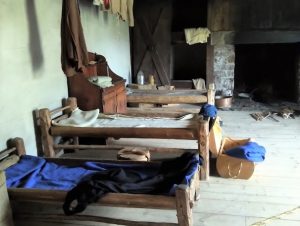
20. Shoemaker / Tailor
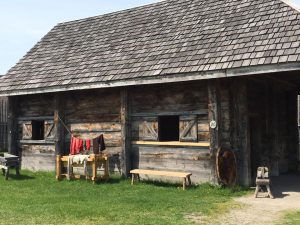
Fabrics sent from France were sewn into clothing. Donnés received one set, and likely made their own repairs.
Shoemaker/Tailor
Christophe Regnault and Jacques Lévrier performed tailoring duties for the mission community. Fabrics sent from France were sewn into clothing. The Donné received one set, and likely did their own repairs.
Wendat attire consisted of leather items: skirts for the women and breechcloths for the men. Leather moccasins, leggings and pouches were common. European clothing included a chemise (considered the undergarment) and a jacket called a doublet, knee-length breeches and socks or leggings, and either a woollen cap or broad-brimmed felt hat. Jesuit garb consisted of the long black robe (cassock) tied at the waist with the belt and a wide-brimmed hat.
This shop also reflects the exchange of culture between the Wendat and French, since both groups adopted clothing elements of the other. The Wendat were known to use the French cloth chemise for their own shirts, and the French began using Indigenous moccasins for travel by canoe and foot.
The Donné clothing had its roots in 17th century Normandy France, where many of these men came from.
Of special note, shoemakerChristophe Regnault was given the special task of caring for the bone relics of Saint John de Brébeuf and Saint Gabriel Lalemant following the decision to abandon the mission in May of sixteen forty nine.
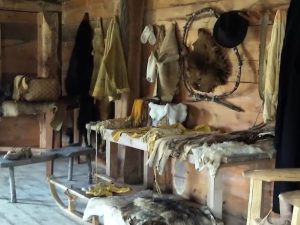
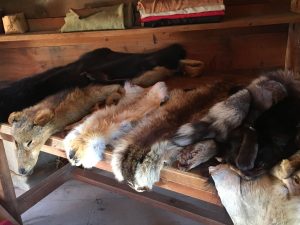
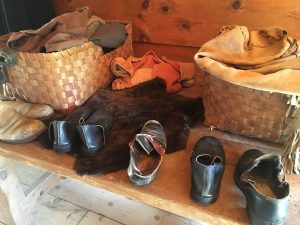
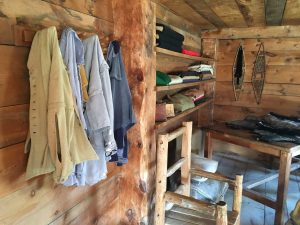
21. En Colombage
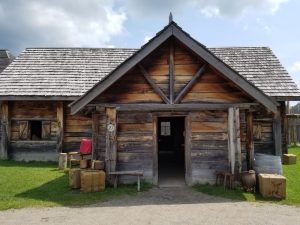
Named for the French construction style predominant at Sainte- Marie, this structure has been re-built as a supply depot.
En Colombage

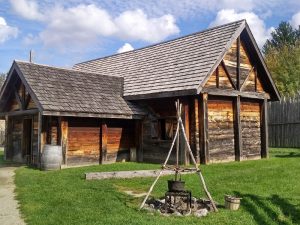
This structure, called En Colombage, is named for the French construction style predominant at Sainte-Marie, this structure has been re-built as a supply depot. Jesuit priest Denis Hegarty, an amateur archaeologist, suggested that its shape more closely resembled that of a chapel.
Small crucifixes and rings were given to Wendat converts, and blankets, axes and other items made excellent presents, solidifying friendship and alliance. Iroquois ambush was a constant danger along the transport route from Québec. The capture or blockade of a canoe convoy meant Sainte-Marie went long periods of up to 2 years without news or supplies.
The Journey of Robert LeCoq

Travelling to Sainte-Marie from Quebec could be challenging, as experienced by Donné Robert LeCoq who battled illness en route.
Travelling to Sainte-Marie from Quebec could be challenging, as experienced by Donné Robert LeCoq who battled illness en route.
Robert LeCoq was the first worker to sign “the Donné Contract”. Journeying from Québec to Sainte-Marie in 1639, LeCoq fell grievously ill with smallpox. Abandoned on a shoreline by the Wendat, who feared the disease, his life was saved by insect maggots cleaning his sores of infection. A passing Wendat captain rescued him and brought him to Sainte-Marie where he gradually recovered from his ordeal.
22. Saw Trestle
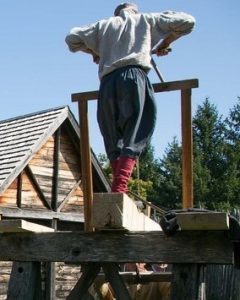
The saw trestle stands as an effective reminder of the backbreaking work involved in the construction of European dwellings.
Saw Trestle
The saw trestle stands as a reminder of the backbreaking work involved in the construction of European dwellings. With some squared timbers destined to serve as beams, others were hoisted on to the trestle for cutting into planks.
Standing atop the log, one sawyer guided the saw’s path through the wood while the sawyer below made the cut by his downward pulling. The frame-handled long saw had teeth pointed on the downward side to this effect.
Squaring de-barked logs was a three-fold process. First the side of the log was notched or scored with a dovetail axe. A bent-handled broadaxe then removed the smaller sections of wood between the notches. Finally, a curved-headed adze was used to smooth the surfaces of the timber.
Follow the pathway past the saw trestle to find the Church of Saint Joseph and the Indigenous Area.
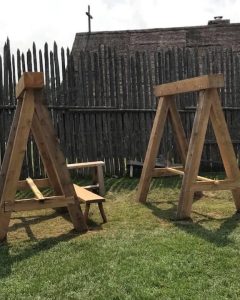
23. Church of Saint Joseph
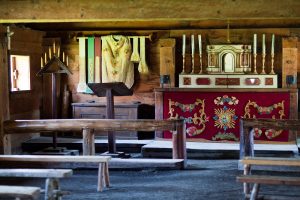

Built to minister to the spiritual needs of visiting Wendat, the Church of Saint-Joseph represents Jesuit efforts to bridge the gaps between the Wendat and French cultures.
Church of Saint Joseph
Built to accommodate the spiritual needs of the visiting Wendat, and to inspire those curious about Christianity, the Church of Saint Joseph represents Jesuit efforts to bridge the gaps between the Wendat and French cultures, and to find opportunities for Christian teaching. It is believed that construction of this Church incorporated elements that were more familiar to the Wendat to assist them in feeling comfortable in the building. These elements may have included a dirt floor, fireplaces, and longhouse-style roof structure.
Grave of Brébeuf and Lalemant
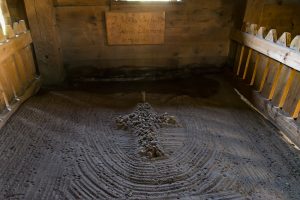
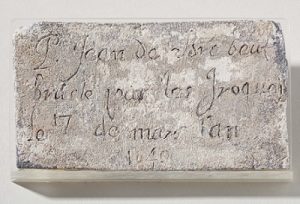
In the back of the Church lies the grave of martyred Saints Jean de Brébeuf and Gabriel Lalemant.
At the back of the Church you will find the grave of Father John de Brébeuf and Father Gabriel Lalemant. On March 16, 1649, these priests were captured by attacking Iroquois forces at the village of Saint Louis. Taken to nearby Saint Ignace (which had also fallen) the two missionaries were tortured to death – a common fate for prisoners.
When a Wendat counterattack successfully drove the Iroquois from the region, the French retrieved the remains of the two priests and buried them in the Church. Prior to abandoning Sainte-Marie, the bodies were exhumed. The bones were taken as sacred relics and the flesh of both men was re-interred in one coffin.
A plaque bearing John de Brébeuf’s name was found in the grave and is now on display in the Sainte-Marie Museum. Subsequent research has indicated that Father Lalemant was also buried in the same location.
Jesuit’s efforts to teach Christianity
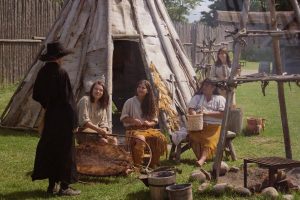
Communication in the Wendat language was difficult; images frequently assisted in explaining abstract matters such as religion and theology.
Communication in the Wendat language was difficult; images frequently assisted in explaining abstract matters such as religion and theology. The colour and splendour of church ceremony aroused Wendat interest, and the sound of bells was appealing. Baptism was reserved until a candidate received proper religious instructions and their desire deemed genuine.
In 1639 the Jesuits celebrated their first long-term healthy adult convert to Christianity, Joseph Chihwatenhwa. The Jesuits acknowledged his significant role in promoting Christianity among the Wendat. His suspicious death in 1641 was officially attributed to the Iroquois but may have come at the hands of the traditionalist Wendat.
The eight martyred Saints

The eight martyrs were canonized by Pope Pius XI on June 29, 1930.
Names and dates of their deaths:
René Goupil: September 29, 1642
John de la Lande: October 18, 1646
Isaac Jogues: October 18, 1646
Antoine Daniel: July 4, 1648
John de Brébeuf: March 16, 1649
Gabriel Lalemant: March 17, 1649
Charles Garnier: December 7, 1649
Noel Chabanel: December 8, 1649
René Goupil (a Lay Brother), John de la Lande (a Donné), and Father Isaac Jogues were killed in Iroquois territory near what is now Auriesville, N.Y. The remaining five martyrs (all Jesuit priests) met their fates in various parts of the Wendat land, which is now south-central Ontario. All eight were canonized by Pope Pius XI on June 29, 1930.
INDIGENOUS AREA
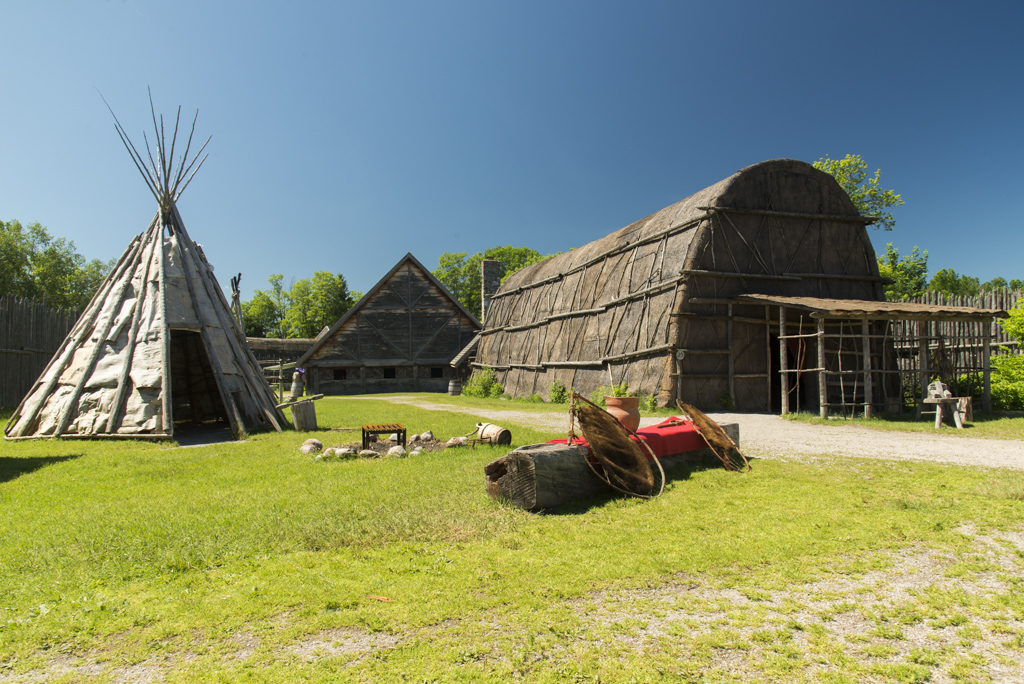
A blend of European and Indigenous building styles, this area of the mission was a place of refuge and welcome for all visitors. Sainte-Marie was truly a meeting place for two very different cultures.
24. Cemetery

This cemetery contains the remains of twenty Wendat and one Frenchman.
Cemetery
This cemetery contains the remains of 20 Wendat and one Frenchman. Pregnant and severely ill, a young Christian Wendat woman traveled to Sainte-Marie – she and her child were the first to die and be buried here.
The square headstone marks the grave believed to be that of Donné Jacques Douart, ambushed and killed in April of sixteen forty-eight by traditional Wendat hoping to scare away the French. While European law demanded the death of the culprits, Father Paul Ragueneau chose to accept Wendat justice, whereby restitution was made through a ceremony of gift giving. In doing so, he avoided a potentially disastrous situation.
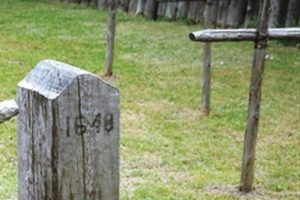
25. Christian Longhouse
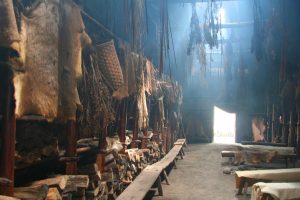

Built like a traditional Wendat dwelling, this longhouse provided shelter for visiting converts.
Christian Longhouse
Built like a traditional Wendat dwelling, this longhouse was a shelter for visiting converts and functioned as a sort of “hotel” for Wendat who desired to learn more about Christianity, allowing them to stay overnight at the mission. In the Wendat villages, the communal aspect of life did not appeal to European sensibilities, and many missionaries complained of the smoke and noise found within the longhouses. Mission work was more easily accomplished in the winter months when the Wendat stayed mainly indoors and were a captive audience for the Jesuit fathers.
The 17th century French did not find Wendat longhouses attractive to live in or visit, and they complained about the smoke, crowding, vermin, and dogs. Living within the longhouse, dogs were often kept as pets. Some dogs were also used in hunting, and dog meat was in special demand at feasts.
Life in the Wendat longhouse


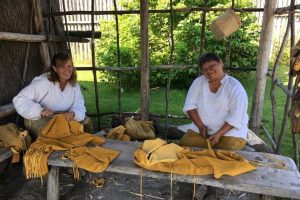
Wendat lineage was traced through the women, whose opinions were respected by the chiefs and captains.
Many longhouses in Wendat villages were much larger than the Christian longhouse you see at Sainte-Marie. Archaeological evidence indicates that the average village longhouse was 25-30 metres long and 6 to 9 metres wide; some longhouses measured over 60 metres. A platform of bark and poles raised above the ground ran along both sides of the interior; in winter, the Wendat slept on the floors near the fires, in summer they slept in the open air or on the platforms to avoid fleas. Smoke from the burning wood fires and inadequate lighting caused eye disease and sometimes blindness among the older people.
Longhouses in the Wendat villages lasted approximately 8 to 10 years, and when a villager had no house to live in, all the people built one for him. A village usually relocated every 20 to 40 years because of soil depletion, the exhaustion of firewood, or threat of attack.
In Wendat villages the longhouses were the focus for family life. Up to six families would be in an average longhouse; the arrangement was based on the traditional matrilineal family consisting of a woman, her daughters or sisters, and their husbands and children. In the longhouse the women had influence on the male leaders. Although there was little privacy, the Wendat’s behaviour in their homes was noted for its gentleness and tranquility.
Wendat Life
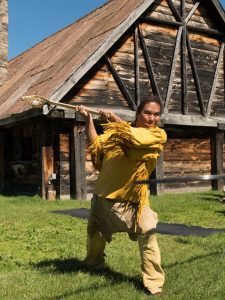
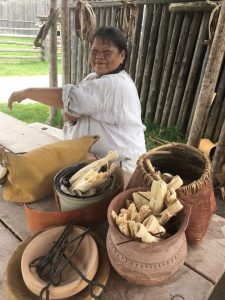
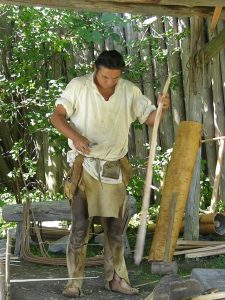
Games of skills, such as Lacrosse, developped and maintained physical abilities.
In Wendat villages, daily life was highly communal and geared towards survival in a harsh climate. Men and women shared the necessary work in a clearly defined manner. Men hunted, fished, traded, warred, and cleared the fields where the women planted, tended and reaped crops. Women also cared for the children and maintained the house.
Wendat lineage was traced through the women, whose opinions were respected by the chiefs and captains. Children were highly valued and were rarely mistreated. Games of skills, such as lacrosse, developed and maintained physical abilities, while games of chance formed the basis of much gambling. Feasts of celebration were frequent – and wealth accrued through gambling was redistributed throughout the village.
26. Wigwam / Christian Area
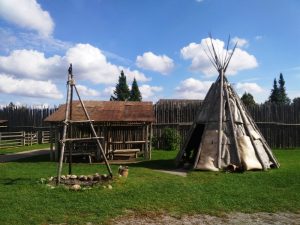
Indigenous travellers constructed temporary dwellings such as wigwams when they came to Sainte-Marie.
Wigwam / Christian Area
Visiting Algonquin and other Indigenous travellers constructed temporary dwellings such as wigwams and lean-tos when they came to visit Sainte-Marie. You can see a second example of a wigwam just past the hospital.
Wigwams were constructed of bark and differed from Indigenous shelters constructed in the West, called Teepees. Teepees, although similar in shape, were covered in the hides of buffalo.
Expansion of the Mission
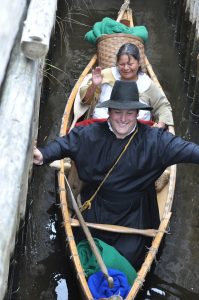
The jesuits wished to extend ther mission work beyond the Wendat community, into other Indigenous nations.
The Jesuits wished to extend their mission work beyond the Wendat and into other nations, but this was not always practical and sometimes had negative effects. For example, a sixteen forty journey by Father John de Brébeuf and Joseph-Marie Chaumonot to the nearby Tobacco nation aroused Wendat suspicion that the French were looking for new trading partners.
It was therefore decided to concentrate missionary efforts in Wendake, until such time as a majority of the villages had been converted. While the Jesuit Relations indicate large numbers of Wendat baptisms after sixteen forty-seven, an accurate count of genuine converts remains difficult to calculate with any certainty.
27. Apothecary Storage & Garden
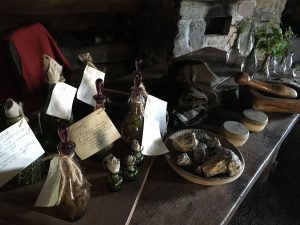
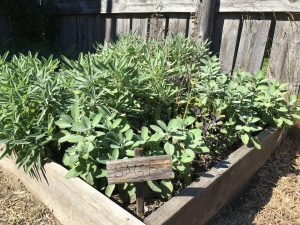
The 17th century style herb garden contains several types of plants commonly used as medicine: mint, thyme, sage and yarrow.
Apothecary and Garden
Inside the apothecary and the 17th century style herb garden you will see several types of plants commonly used as medicines: mints, thyme, sage and yarrow. Apothecary Joseph Molère became the first practitioner, utilizing both French and Indigenous herbs. Medicine was very primitive in the 17th century compared to today, but hospital surgeon Francois Gendron learned and experimented with herbal treatments inspired by Wendat practices.
Prior to the arrival of Joseph Molère, Donné Simon Baron, and occasionally the Jesuits themselves, reported performing procedures such as bloodletting. While the Jesuits rejected the spiritual aspects of Indigenous curing, they did accept the value of the Wendat’s medicinal use of herbs and permitted the use of these natural medicines.
Of special note, the French learned to make a tea from red sumac. Rich in vitamins, it was useful in curing and preventing scurvy.
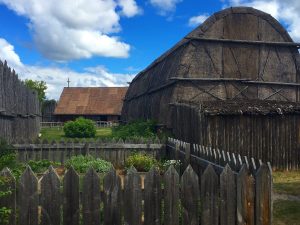
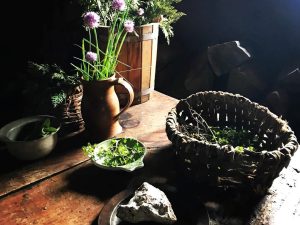
28. Hospital
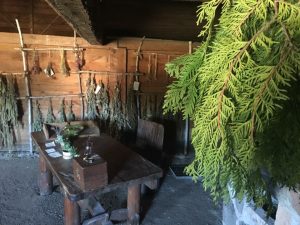
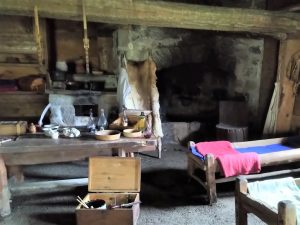
François Gendron incorporated indigenous cures into his own work as surgeon, providing comfort to the French and Wendat alike.
Hospital
From the beginning of their contact with the Wendat the French provided medical treatment for them. The Jesuit Relations of 1644 gives the first indication of a specific and separate structure built as a community hospital. In the 17th-century limited understanding of human biology caused the spread of disease. Indigenous immune systems were unable to combat European contagions such as smallpox, measles and influenza.
Surgeon François Gendron demonstrated his desire to learn about Indigenous cures and incorporate them into his own work. Obtained by the Wendat through their trade network, one such treatment was the “Erie Stone”, from which a powder was derived for the treatment of sores, ulcers and cancers.

29. Non-Christian Area
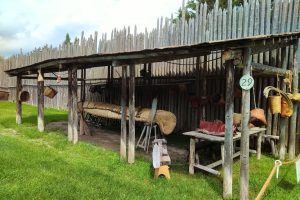
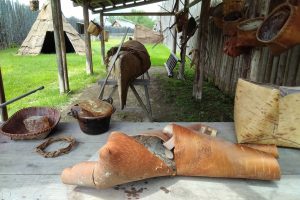
Although Wendat culture was very tolerant of differing opinions, tensions existed between those who adopted Christianity and those who followed traditional ways.
Non-Christian Area
Although Wendat culture was very tolerant of different opinions, tensions existed between those who adopted Christianity and those who followed traditional ways. Usually these differences stemmed from converts’ non-participation in feasts or activities viewed as pagan by the missionaries. Some segregation occurred within Wendat villages, and likely did at Sainte-Marie as well.
In later years the area surrounding Sainte-Marie became a refuge for many Christian Wendat and traditional Wendat, whose villages had been destroyed or abandoned due to disease, famine or war. Father Paul Ragueneau estimated that sometimes hundreds might stay nearby to receive food, medicine, religious instruction, or protection.

30. Non-Christian Longhouse
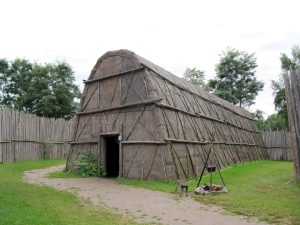
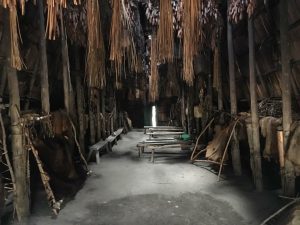
This reconstructed longhouse more closely approximates the size of those found in Wendat villages.
Non-Christian Longhouse
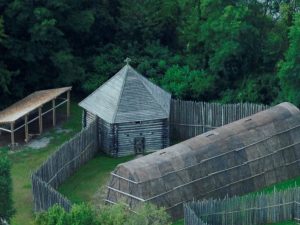
The Jesuits wrote of a nearby cabin used as a temporary shelter by visiting Wendat. This reconstructed longhouse more closely approximates the size of those found in Wendat villages.
Winter was a time for the sharing of oral traditions, and stories served as education and entertainment. In learning about Wendat beliefs, the Jesuits heard many stories, and although largely dismissive of them, recorded some in their writings.
The Wendat Creation Myth
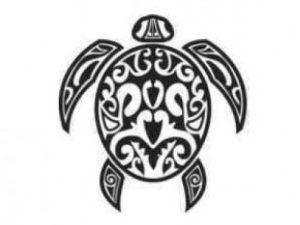
Winter was a time for sharing of oral tradition, and stories served as education and entertainment.
As Father Brébeuf discovered, a common belief among the Wendat was that a woman named Aataentsic fell from her home in the sky when the world was only water. Seeing her falling, Turtle instructed the other animals to bring up soil from under the water and spread it across her shell. Aataentsic landed safely upon Turtle’s soil covered back and became the first woman on the earth.
The Legend of the Turtle
The Wendat believed that Aataentsic, the mother of mankind, had originally dwelt in the sky, where spirits live much as mankind does today on earth.
One day, when either chasing a bear or cutting down a tree to obtain medicine for her husband, Aataentsic slipped through a hole in the sky and began to fall.
When the great tortoise, which swam in the ocean below, saw this, he ordered the other aquatic animals to dive to the bottom of the ocean and dredge up soil to pile on his back. They did so, and in this way the earth was formed and Aataentsic landed gently upon it.
31. The Final Days of Sainte-Marie
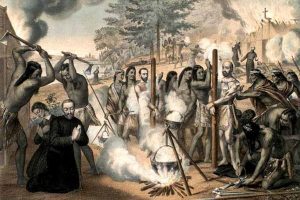
The Martyrdom of Jean de Brébeuf and Gabriel Lalemant, at the hands of the Iroquois and the final days of Sainte-Marie.
The Final Days of Sainte-Marie
As you exit the historic site towards the museum and restaurant, let yourself begin to imagine the final days of Sainte-Marie.
June 1649: The Burning of Sainte-Marie
In 1649 the remaining Wendat decided to abandon their home territory. Though Sainte-Marie had never suffered Iroquois attack, the Jesuits chose to move with the Wendat and establish a new community on Gahoendoe (now named Christian Island). Erected quickly and with defence in mind, the mission of Sainte-Marie II consisted simply of a four-cornered stone construction around a Wendat encampment.
The French did not wish their original Sainte-Marie home desecrated after their departure, preferring to destroy it themselves in June of sixteen forty-nine.
To quote Father Paul Ragueneau: “We ourselves set fire to it and watch burn before our eyes, and in less than one hour, our work of nine or ten years”.
The sixteen forty-nine re-location to Gahoendoe Island offered the Wendat little opportunity to plant successful crops, a situation worsened by drought. With starvation a grim reality, and the Iroquois controlling the mainland, this second community was abandoned in the spring of sixteen fifty.
The Jesuits and some three hundred Christian Wendat eventually journeyed back to Québec in 1650, where a new community was established outside the city. The people of the Huron-Wendat nation of Lorette live there still, and actively preserve their heritage.
Many traditional Wendat scattered and joined other tribes to survive, in some cases even finding refuge among their enemy, the Iroquois. The Wyandotte of Kansas, the Wyandotte of Oklahoma and the Wyandotte of Michigan in the United States are other branches descended from the people who once called the southern Georgian Bay region home.
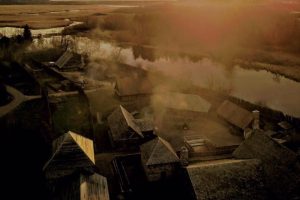
32. Indigenous Gardens
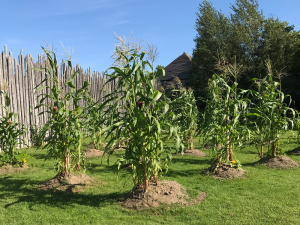
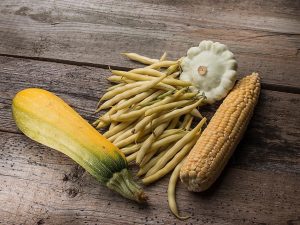
The Wendat grew their corn, beans and squash together in slightly raised mounds, referring to them as the Three Sisters.
Indigenous Gardens
The Wendat grew their corn, beans and squash together in slightly raised mounds – referring to them as The Three Sisters. Successful seasons allowed the Wendat to trade astonishing quantities of corn with their northern neighbours, so much so that the Jesuits once referred to Wendake as “the granary of the Algonquins”.
The Legend of the Three Sisters
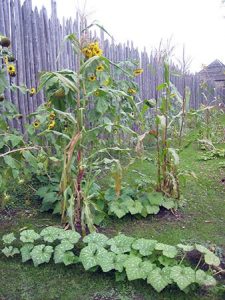
Indigenous people believe that the spirits of corn, beans and squash crops are loving sisters who like to stay beside one another.
Corn, beans, and squash were always planted together. Indigenous people believe that the spirits of these crops are loving sisters who like to stay beside one another. When the seeds were planted, the Indigenous People prayed to the Thunder Spirit not to burn the earth and to give the sisters all the water they needed. Late in the summer, when the crops were ripe, the people celebrated because the sisters had grown up.
At the next moon, they danced in honour of the harvest. The life cycle was complete. On that day, the women sang: “The three sisters are happy because they are home again from their summer in the fields.”
33. Pathway to Museum & Restaurant
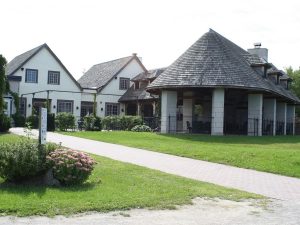
Restaurant Sainte-Marie and the museum, which provides background to the story of Sainte-Marie among the Hurons.
Pathway to Sainte-Marie Museum
The pathway leads you to Restaurant Sainte-Marie and the museum. The museum provides background to the Story of Sainte-Marie among the Hurons and serves as a fascinating and informative conclusion to your visit.
Progress through the Museum is chronological and takes you on a journey from 17th century Europe to the New World, exploring European society and Indigenous culture, as well as the Jesuit missionaries.
The museum attempts to explain the motives and transportation of early explorers; what they left behind in Europe, what they came to in New France and how they learned to adapt to a new way of life. Through the senses of sight, sound, touch and even smell, the Sainte-Marie museum illustrates the events of that era through more than 750 artifacts which were purchased, generously donated or loaned. The last section explores the modern era of archaeology and reconstruction.
We would kindly ask that no food or drink be consumed in the Museum, as it is a special environment. Thank you for your visit!
Merchant’s
Portable Scales

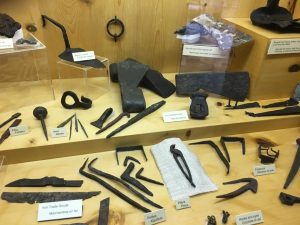
Iron Tools & Objects
Reproduction of
Galieo’s Telescope
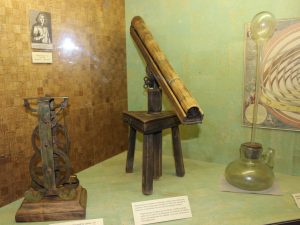
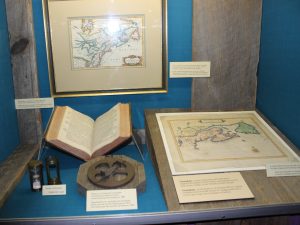
“Champlain Travels”
and 17th Century Maps
Important Note: The audio recordings for our tours are created using artificial intelligence. While we strive for accuracy, please be aware that the pronunciation of some names may not always be precisely as expected.
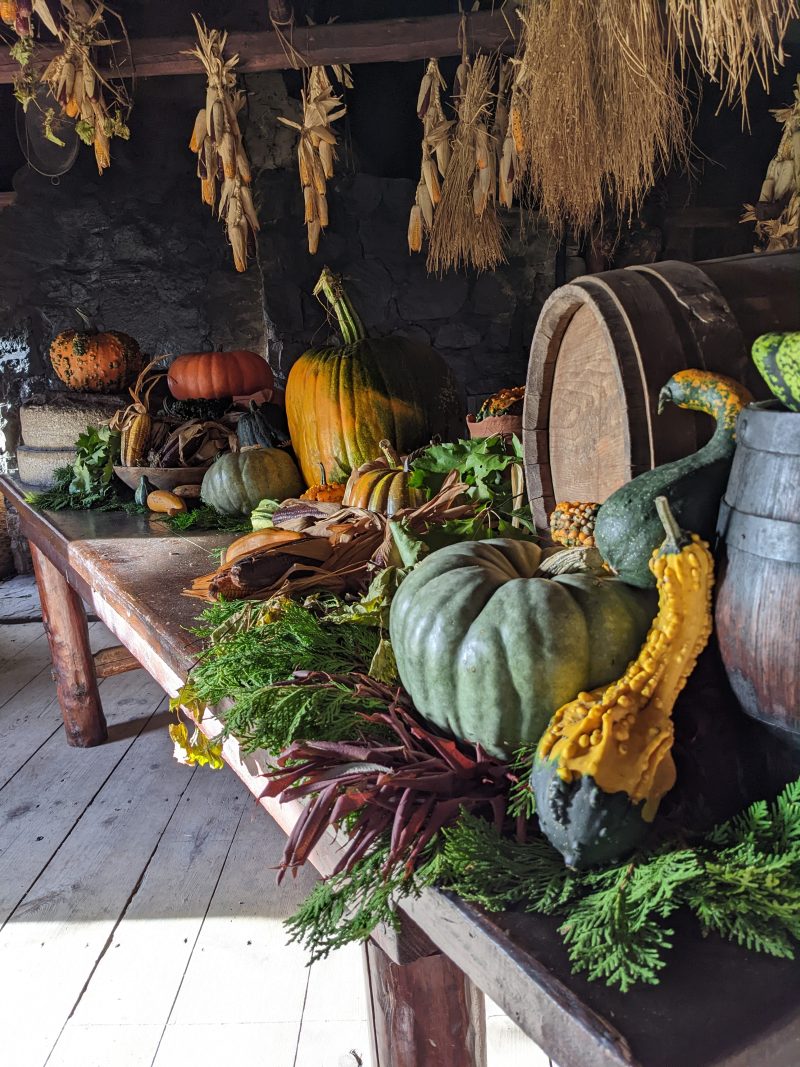
Season Passes
For just $35 tax included, season pass holders gain unlimited admission to both Sainte-Marie and Discovery Harbour during their visitor seasons, as well as unlimited admission to most special events at both historical attractions, including First Light and Pumpkinferno!
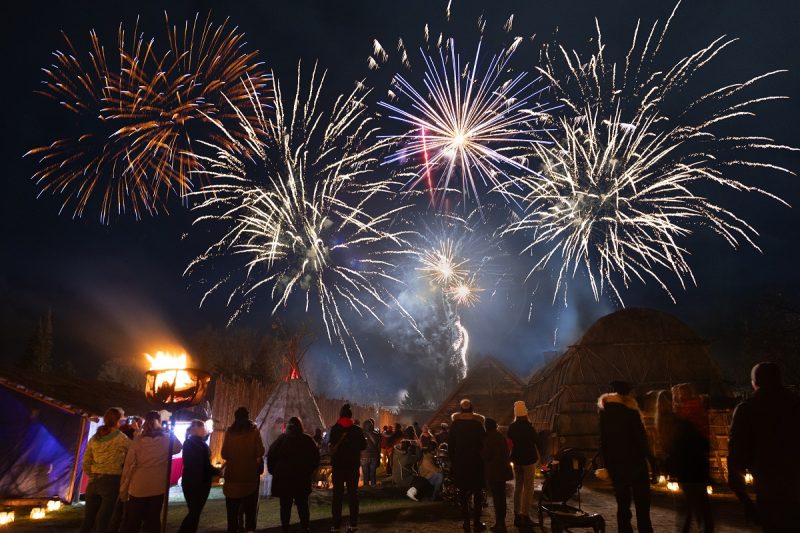
Special Events
Experience Sainte-Marie in a whole new way; check out our events! Learn about First Nations, Métis and Inuit cultures on National Indigenous Peoples Day. Discover Wendake at night during the Shadows and Stone Evening Experience. And more!
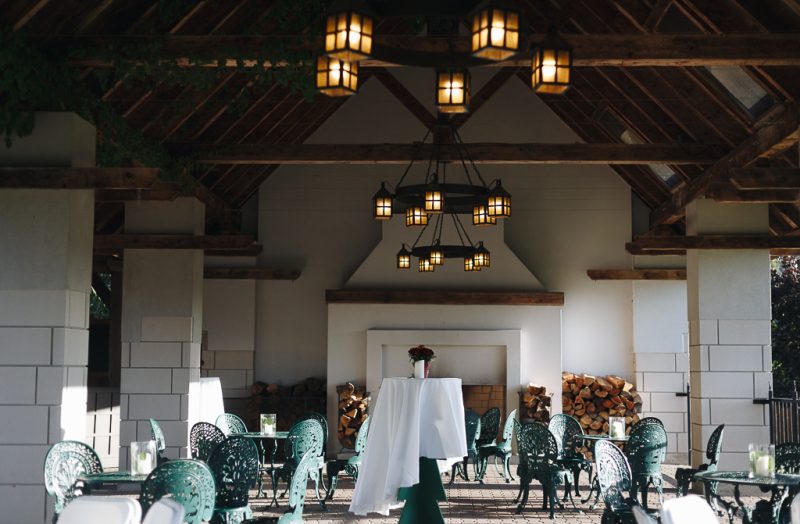
Restaurant Sainte-Marie
Restaurant Sainte-Marie is open all year round! Come and discover this new culinary gem. Enjoy a cold drink on one of the most beautiful patios in the region. Or order a carefully prepared meal inside our cozy dining room.
